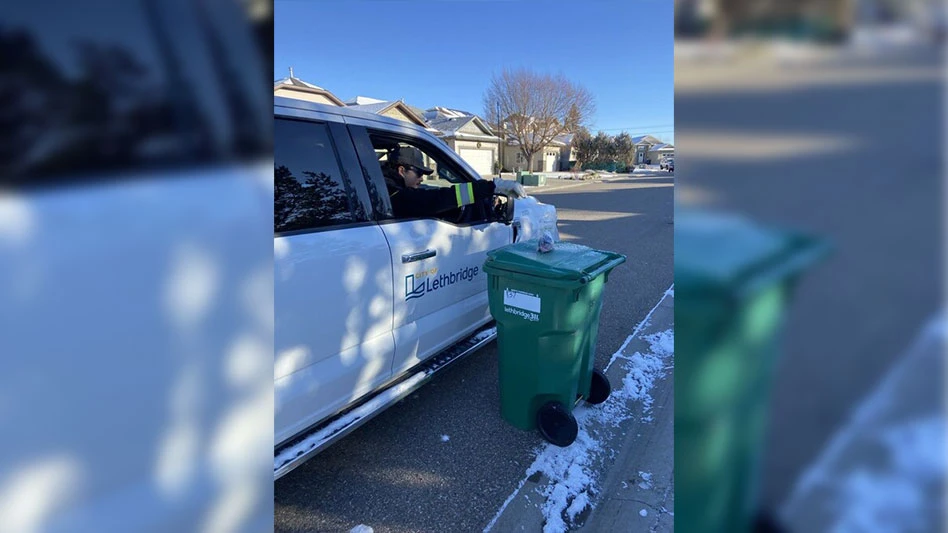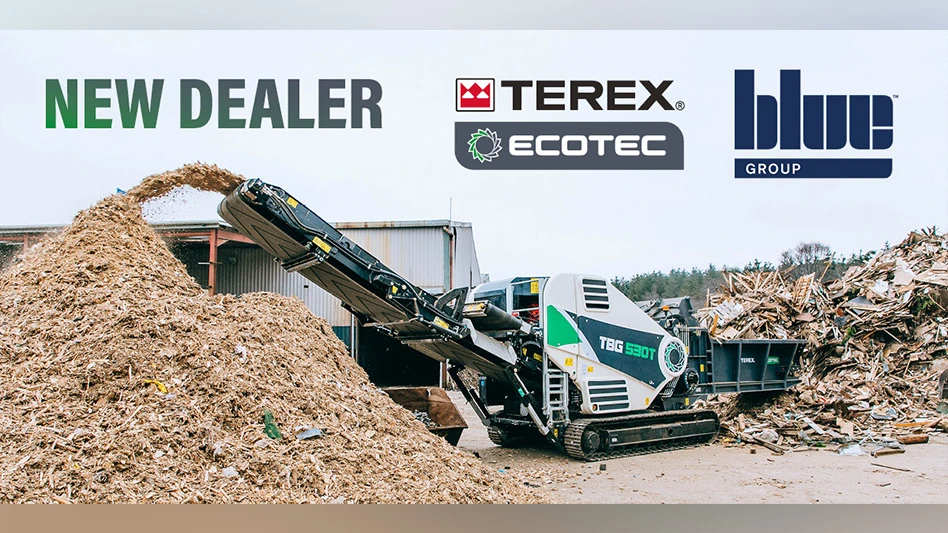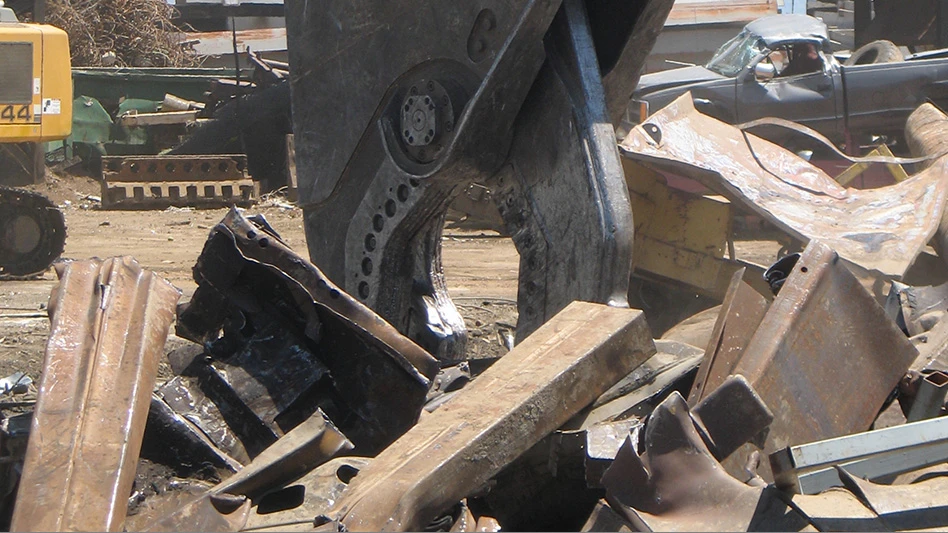 For nearly two decades, the booming economies of China and other rapidly developing nations have led to a growing worldwide containerboard industry and accompanying demand for the recovered fibre required as a raw material.
For nearly two decades, the booming economies of China and other rapidly developing nations have led to a growing worldwide containerboard industry and accompanying demand for the recovered fibre required as a raw material.
During this same stretch, however, the developed world has seen the continued revolution in the way people, companies and organizations communicate, with electronic words and figures on a screen and computer storage rapidly replacing ink-on-paper.
As of mid-2014, ink-on-paper communication—and the paper mills that supply it—continue to fight an uphill battle to carve out growth markets or retain historic markets.
On the containerboard side, meanwhile, recovered fibre collectors and merchants in Europe and North America continue to watch China’s containerboard production and recovered fibre generation figures closely for signs that the nation’s enormous scrap paper deficit is narrowing.
Packaging progress
After the sub-prime mortgage crisis of 2008 and the following lean years in Europe and North America, paper recyclers on those two continents were fortunate that continued economic growth in China provided steady demand that largely kept recovered fibre prices from a total collapse.
China’s containerboard sector hit some rocky stretches in 2009 and 2010 as its exports to ailing Europe and North America declined, but the country’s economic planners also focused on boosting demand for consumer products, which helped redirect some of the containerboard and boxboard production.
Among the biggest interrupters of the flow of old corrugated containers (OCC), mixed paper and other grades from Europe and North America to China was not a cutback in production, but rather quality enforcement procedures that took effect in 2013, known as Operation Green Fence. The newly vigilant regimen enforced by China Customs and other agencies led not only to additional claims, downgrades and rejections, but also to backed-up ports in China where delays in unloading stretech out through the first half of 2013.
Despite the turmoil caused by Green Fence, figures from the Journal of Commerce (JOC) show that recovered fibre shippers in North America remained among the foremost users of trans-Pacific containers in 2013.
The JOC, based in the U.S. city of Newark, New Jersey, creates a Top 100 U.S. importers and exporters ranking each year using data from its Port Import/Export Reporting Service (PIERS) trade intelligence data division and other sources.
For 2013, the JOC found that California-based America Chung Nam (ACN), a supplier of recovered fibre and sister company to China’s Nine Dragons Paper Industries, booked more than 374,200 20-foot equivalent unit containers (TEUs) for export from the United States. This placed ACN far and away the largest container exporter for the year.
While scrap paper did not fill every ACN container—some were filled with plastic scrap, animal feed or even California wine—recovered fibre is the company’s leading export commodity.
The next three largest container exporters on the JOC list also ship recovered fibre from the U.S. to China and other Asian countries: Koch Industries (including its GP-Harmon fibre trading division), 213,600 TEUs; International Paper, 172,600 TEUs; and the Ralison International division of Chinese papermaker Lee & Man at 112,700 TEUs.
While positions 6 through 10 on the JOC list included chemical and agribusinesses such as DuPont, Dow Chemical and DeLong, it also included California-based scrap paper exporters Potential Industries and Newport CH International and forest products firm Weyerhaeuser (whose recycling division was sold to International Paper in 2008).
The sheer volume of containers with recovered fibre that continue to be booked from the U.S. West Coast to China point to a continued OCC and scrap paper deficit in that nation, despite renewed efforts by China’s government to collect more fibre internally.
Providing a European viewpoint, Thijs Cox of Netherlands-based recovered fibre trading firm Ciparo BV says the buying arms of mill companies like Nine Dragons are having an effect on independent brokers. “Big Chinese paper conglomerates have landed in Europe to purchase their own fibre, and smaller paper mills in China are often having a tough time,” says Cox.
|
Convening in India The Recycling Today Media is co-hosting a recycling conference in India for the first time in January 2015 in New Delhi. Paper Recycling India 2015 has been scheduled for 29-30 January 2015. The Recycling Today Media Group is co-hosting the event along with Info Systems Pvt Ltd., publisher of Waste Recycling India. Also supporting the event are the Indian Paper Manufacturers Association, the Indian Pulp & Paper Technical Association and the Indian Agro & Recycled Paper Mills Association. “Recyclers in India have for several years requested that we bring our conference model to their nation,” notes Recycling Today Media Group Publisher James R. Keefe. “We’re delighted that we can work along with our Indian allies to co-host this event in January.” The Paper Recycling India event in New Delhi will bring together recyclers, merchants and mill companies from the Indian subcontinent and around the world to exchange ideas and information. Programme and registration information for Paper Recycling India can be found at www.RecyclingTodayEvents.com. |
As a result, he says Ciparo is “now active in more Asian countries than only China.” (For more on Ciparo BV, see the feature “Expanded Scope”)
Mills in North America and Europe, as well, continue to compete aggressively for recovered fibre. After U.S. containerboard production plunged from 34.2 million tons in 2006 to 29.5 million tons in 2009, it subsequently rebounded to above the 32 million mark in 2012.
According to the American Forest & Paper Association (AF&PA), containerboard plants in the United States are operating at a healthy capacity rate in 2014. “The containerboard operating rate for June [2014] rose slightly by 0.1 points compared to May, from 97 percent to 97.1 percent,” said the AF&PA in a July 2014 news release.
New mill capacity has come online in the EU in the past three years despite the austerity measures and struggles of southern Europe. To what extent the new capacity will shutter some older mills is still being determined.
One of the EU’s largest containerboard makers, Ireland-based Smurfit Kappa Group, reports signs of optimism in the notes accompanying its second quarter 2014 results.
“Growth in European packaging volumes has continued at steady levels, with a 1% growth in box volumes in the year-to-date, and an improving trend in quarter two,” says the company. Smurfit Kappa also notes “good performances in countries such as Germany, the U.K. and Spain.”
Screens versus pages
Historians have long touted Johannes Gutenberg’s printing press as a milestone event in humankind’s ability to communicate. In the 21st century, however, the world of communication and information storage is rapidly moving away from paper. Newspaper, magazine and book publishers are struggling to retain their traditional models, and records management and storage firms are seeing the amounts of paper documents stored continuing to shrink.
The change is having an immediate effect on recovered fibre flows and paper mill production, while the latter circumstance will eventually effect the document destruction business.
Using the United States as a gauge, the post-financial crisis rebound that occurred in containerboard production was not matched by a rebound in newsprint production. AF&PA numbers show that newsprint production in the United States peaked at 16.4 million tons in 2000 and subsequently plummeted to less than 9 million tons in 2012.
Operators of U.S. material recovery facilities (MRFs) have lamented the decline of the old newspapers (ONP) grade as discarded newspapers represent a smaller share of the recyclable material volume flowing into MRFs.
The U.S. decline in print and writing paper production and recovery for recycling has not been as swift as that of ONP, but it does present a troubling scenario. The AF&PA estimates that from 1997 to 2007, American offices, schools and houses consumed between 30 million and 32.7 million tons of printing and writing papers per year.
In 2008, consumption slipped to 28 million tons, and by 2013 it had fallen to 20.7 million tons. Although the recycling and document destruction industries captured 53% of that fibre for recycling in 2013, the 10.9 million tons recycled was well below the 2007 peak of more than 16.6 million tons.
To some extent the fall will be met by a compatible drop in demand for ONP and office grades. However, tissue mills that rely on recovered fibre as a feedstock will be in a more difficult position as they tend to seek out these grades.
The wider world
Paper makers and some recovered fibre collectors are facing sector-driven and regional challenges, but the overall demise of the industry is not in the offing, according to a number of researchers.
Asia’s growing middle class is keeping paper mills in that part of the world busy, and for paper recyclers the presence of that market can yield benefits. A forecast from Ireland-based Research and Markets predicts 5.9% compound annual growth (CAGR) in paper industry revenue between 2012 and 2017
Even newsprint and printing and writing paper mills are seeking and finding new markets in newsletters, niche magazines and free-distribution weekly newspapers. Specialty paper use also is likely to grow in China and Asia, according to Research and Markets.
Tissue is another growth sector, with 4.9% global CAGR predicted in that sector from 2012 to 2016 by the London-based research group Technavio.
In Europe, the light at the end of the tunnel can remain difficult to discern. According to the Brussels-based Confederation of European Paper Industries (CEPI), the organisation’s member companies produced 91.1 million tonnes of paper and board in 2013.
“This is a decrease of 1.2% (1.1 million tonnes) compared to 2012,” notes CEPI, and “2013 is the third consecutive year paper and board production has declined, [following a] rebound registered in 2010.”
If paper communication continues to struggle, European recyclers are likely to serve a market that looks vastly different from the one of the 20th century. “The share of the packaging grades and sanitary and household papers is continuously growing and in 2013 represented 45.9% and 7.7%, respectively, of all paper and board produced in Europe,” says CEPI.
The author is editor of Recycling Today Global Edition and can be contacted at btaylor@gie.net.
Latest from Recycling Today
- Phoenix Technologies closes Ohio rPET facility
- EPA selects 2 governments in Pennsylvania to receive recycling, waste grants
- NWRA Florida Chapter announces 2025 Legislative Champion Awards
- Goldman Sachs Research: Copper prices to decline in 2026
- Tomra opens London RVM showroom
- Ball Corp. makes European investment
- Harbor Logistics adds business development executive
- Emerald Packaging replaces more than 1M pounds of virgin plastic





